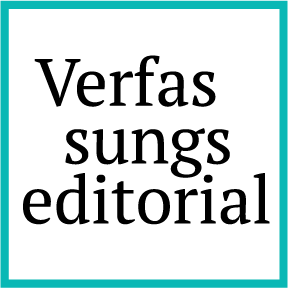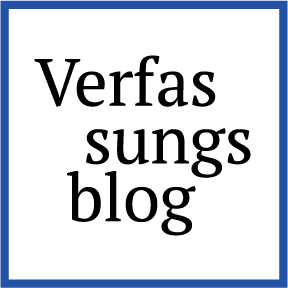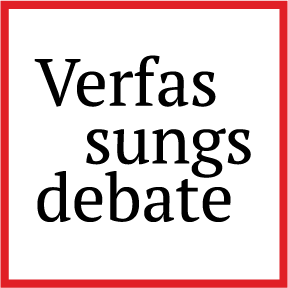What Madonna Got and the EU Did Not
Students’ Uprising in Serbia
For the past three months, Serbian citizens, led by students, have been actively protesting, demanding a shift from the rule by man to the one, governed by the rule of law. The protests followed the tragedy of November 1, 2024, when the recently renovated canopy of the railway station in Novi Sad, the capital of the Vojvodina province in Serbia, collapsed. The tragedy took 15 lives and leaving 2 individuals severely injured. The President’s denial about the canopy reconstruction, coupled with the government’s striking reluctance to take political responsibility and a lack of transparency concerning the agreements with the Chinese and Serbian companies involved in the reconstruction, prompted concerns about corruption. The Prime Minister has resigned, and massive protests are sweeping across the country, including regions that, as an unknown commentator noted, did not rise even against the Turks in medieval times. Meanwhile, the EU continues to prioritize regional stability over addressing the President’s abuse of power. I will analyze the dramatic structure of this situation in five acts.
Meet the enlargement show
Serbia began its accession negotiations with the EU in 2014 after signing the 2013 Brussels Agreement, the first to normalize relations between Belgrade and Pristina, with the EU facilitating the process. From the EU Accession Opening Statement, the relationship between Belgrade and Pristina has been recognized as a crucial factor in assessing Serbia’s progress toward EU membership: “This process shall […] gradually lead to the comprehensive normalization of relations between Serbia and Kosovo, in the form of a legally binding agreement by the end of Serbia’s accession negotiations.”
Over the past 10 years, not much has changed. The current Serbian administration involved in the EU negotiations is the same one that signed the first Brussels Agreement. President Vučić, who was the vice premier and defense minister at that time, has remained a mastermind of Serbian politics. Throughout this period, the EU has prioritized regional stability over Serbia’s democratization. This focus on stability allowed Vučić to become a compliant partner, as he generally met Serbia’s obligations regarding normalizing relations with Kosovo, though he stopped short of signing a legally binding agreement. As the President has either quietly or overtly complied with EU demands regarding Kosovo, the EU has largely overlooked that he changed representative with delegative democracy as he governs the country as he sees fit. On this account, the EU has more or less consistently maintained that “the track record of the functioning of democratic institutions and processes has been mixed.” Ironically, despite Serbia’s moving from emerging democracy to a hybrid regime, the President of the EU Commission, six days before the tragedy in Novi Sad, openly praised the Serbian President for being “committed to delivering on reforms, in particular on the fundamentals[…] the rule of law and democracy.”
Furthermore, when it became evident several years ago that Serbia possessed the largest lithium mine in Europe, an asset that could enable EU countries to rely on Serbia rather than China for the supplies, the President emerged as an even more agreeable partner not only for the EU but also for some influential EU Member States, like Germany.
In sum, after Chancellor Scholz visited Serbia last summer, primarily to secure lithium supplies and in anticipation of Trump’s potential return to the US presidency, with whom Vučić had aligned during his first term, it seemed nothing could stop the Serbian President from, what András Sajó described as “ruling by cheating”. This was despite Serbia’s non-imposition of sanctions against Russia and its deepening relations with China.
Then came November 1, 2024.
Rising action: the ghost of direct democracy centering on the rule of law
The tragedy in Novi Sad shocked Serbia. Citizens of Novi Sad and Belgrade began blocking streets every Friday, on the same day the tragedy occurred, observing 15 minutes of silence in honor of the 15 victims. They simultaneously accused the authorities of corruption and inadequate oversight. However, the police, along with some supporters and members of the ruling party, responded with physical violence during the protests. While some protestors were arrested, the police did not detain anyone who attacked the protestors nor instituted any proceedings against them. The student protest began on 22 November 2024, when students from the Belgrade Faculty of Dramatic Arts were assaulted during a traffic blockade held in honor of 15 victims. In response, the students decided to block their faculty building and presented several demands, including prosecuting the attackers. The wave of student protests spread rapidly, and by mid-December, almost all state universities in Serbia were blocked. At present, none of the state university functions, while private ones join the protests in different ways.
To prevent political interference, avoid politicization of their demands and tabloid media manipulations, the students formulated their requests and continued to make decisions through Athenian-style assemblies known as the plenum. This approach fosters a direct connection between the students and the law, akin to Rousseau’s connection between people and law. The plenums operate without formal leadership; each session features a different moderator; all students from a particular university department are allowed to speak, respond, and vote. No media appearances, events, or actions can occur without a decision made by the plenum.
The quest for the rule of law is central to the students’ uprising in two ways. First, three out of four student demands stem from the rule of law: (1) the publication of all documents related to reconstruction, including financial reports, to enable prosecutors to take legal action; (2) the identification of all individuals who attacked the students and university professors, the initiation of criminal proceedings against them, and the dismissal of any public officials among them; (3) the release of detained protesters and dropping the charges against them; and (4) a 20% increase in funding for state universities. Second, students reminded the President, who invited them to talk about the demands, about the separation of powers by sending him a message: “Nisi nadležan” (You are not in charge). Thus, they quickly found the key to resisting the President’s unconstitutional actions, unlike the opposition, which is still searching for the strategy to overthrow him for large-scale abuse of presidential authority.
Climax: tempering power
Martin Krygier famously argued that the purpose of the rule of law is to temper power’s exercise to avoid arbitrary use, making the ideal of the rule of law not only legal but also political and social. In Serbian case, following a high degree of public outrage and persistent student demands, by the end of December, 13 individuals were charged with a criminal offense against public safety in connection with improper and irregular execution of construction works. Among them was the Minister of Construction, who was detained only for several days and then released after the president publicly questioned the suspicion regarding his guilt, low-level officials from the government or construction-related companies, and technical and expert supervisors. However, no arrests or charges were made concerning corruption-related offenses, which sparked another wave of protests across the country, unprecedented in Serbian history.
Initially, the government and the President were dismissive of the protests, alleging that students were financed by Western interests and Croatian intelligence services and threatening them with the loss of state loans and subsidies. Pro-government media disclosed some personal information about the protesters, while the Security Intelligence Agency interrogated some students and their parents. After a while, the state officials turn the page by promising students low-interest loans for flats, disclosing some of the construction related documents and extending invitations for a dialogue. Eventually, after a violent attack on a female student by provocateurs close to the ruling party on January 27 in Novi Sad, the following day, the Prime Minister resigned.
The students’ fight for the rule of law attracted global attention and support, ranging from Madonna and Marina Abramovic to many citizens of the states that used to be part of the former Yugoslavia. One would also expect strong support from the EU, especially considering its previous unwavering backing of the Georgian people’s fight for democracy, and the rule of law being central to the Union’s external actions. However, aside from unpersuasive verbal support from the EU Commissioner for Enlargement, and a discussion in the EU Parliament that did not lead to a resolution, unlike the response to the alleged fraud in the 2023 national elections, the EU has largely remained silent.
Falling action: “pump it up” as a response to manipulation
Following the climax, the conflict between the protagonist and antagonist unfolds, creating suspense about the final outcome. In this light, the resignation of the Prime Minister would be a turning point in any parliamentary system, but not in Serbia’s current state of affairs. Shortly after the Prime Minister’s resignation, the President continued maneuvering behind the scenes. On one hand, he began to respond to student demands in a manipulative manner, by allowing the release of additional construction-related documents, granting pardons instead of abolishing the proceedings against the protesters (none of whom were sentenced), and announcing amendments to the Higher Education Law intended to increase funding for state universities indefinitely. To tamp down the anger and prove the regime’s devotion to fight against corruption, the arrests also begun targeting controversial businessmen close to the ruling party and low-level governmental staff due to corruption-related affairs not connected to the tragedy in Novi Sad.
On the other hand, despite the Prime Minister’s resignation, there have been no changes regarding the administration transition. The National Assembly has not yet confirmed the Prime Minister’s resignation, as required by Article 132 (3) of the Constitution. Furthermore, a parliamentary session to address this matter has not been scheduled, despite the resignation occurring three weeks ago. As a result, the Prime Minister and the Government continue to operate under their regular mandate, since the Government’s term of office only ends once the resignation is formally confirmed. Moreover, despite the public outrage, the President did not give up on being, to borrow from O’Donnell, “the embodiment of the nation and the main custodian of the national interest.” To smear the protests, he initially proposed a constitutionally not envisaged advisory referendum on his presidency, but when that idea failed, he resurrected the old idea of Vojvodina’s secession and called to fight separatism. Simultaneously, while manipulating the date of the parliamentary session and creating a narrative around separatism, the President continues to assert that all student demands have been met, even promoting this claim to the EU Member States.
In the meantime, the protests have expanded significantly in terms of territory, participation, and objectives, answering the manipulations with the “Pump it Up” slogan, which boomers like me remember from the 1978 Costello’s song. By February 1, evidence indicated that protests had occurred in at least 297 locations since the tragedy. A diverse group of professionals has joined students in their demands. The climate of fear has also diminished. Most elementary and high school teachers, who have not worked since mid-January, are now requesting salary increases on the streets. Farmers and artists are calling for budget reallocations concerning state subsidies. The fight against lithium extortion has intensified, resulting in the first physical expulsion of municipal leaders affiliated with the ruling party from the municipality where the lithium mining was originally planned. Thus, students’ relay marathon, with the Constitution being a baton, testifies that tempering the power will not stop and that without such tempering, as Krygier observed, a state cannot be legitimate.
The denouement: who will benefit from the rule of law magic?
Since everything has happened in the previous four acts, what remains is to tie up loose ends and answer final questions.
As a passionate chess player (of a questionable mastery), President Vučić believes that he still pulls the strings. Apparently, any resolution, barring a revolution or the President’s resignation, cannot happen until the Prime Minister’s resignation is confirmed. After that, the President will have 30 days to form a new government. If that fails, the President is required to dissolve the National Assembly and call for new elections.
The first scenario of a new government seems more feasible than the second, considering that the opposition and citizens will most certainly boycott the elections due to proven track records of election fraud in the 2023 national elections and 2024 local elections. However, there is one further wrinkle. It is also unlikely that the new government would provide a life belt to the current regime due to the tricky nature of the protestors’ demands. Although the students’ demands do not explicitly call for the resignation of the Government or the President, fulfilling those demands would reveal the regime’s deep involvement in corruption, suggesting that the ruling party cannot endure in any event. Another option is the establishment of a provisional government tasked with preparing new elections. While the President is firmly rejecting this scenario, the opposition is struggling to unify in their approach. A potential nationwide general strike or massive enduring protest in the capital could catalyze such a development.
Putting the resolution to one side, the EU needs to prioritize its alignment with the Serbian citizens rather than continually trying to balance enlargement with geopolitical considerations and call for inclusive dialogue that reflects the President’s position. A good example of this alignment occurred last year when the EU Parliament called for an international investigation and the deployment of an EU expert mission to look into alleged fraud during the 2023 Serbian national elections. Furthermore, the President of the EU Commission should condemn the violence and harassment faced by students and respond to the ongoing political crisis, similar to her actions regarding the situation in Georgia, another EU candidate country. Finally, adhering to the rule of law, the EU should challenge the President’s grip on power by implementing a merit-based approach to the accession process. The rest will do Serbian citizens alone! Pump It Up!



